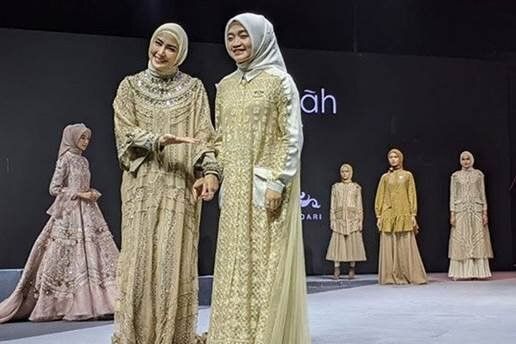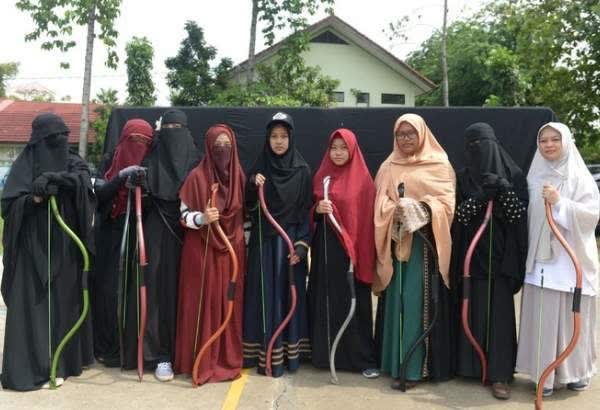A collaborative article titled “Indonesian Muslim Attire: Sarong, Koko, and Surjan, and the Axis of Islamic Fashion” has been prepared and published by the Indonesian Fashion Designers Society, the Cultural Consulate of Iran, and Maryam Daneshvar Ghahfarrokhi, a Master’s student in Fashion Design at the Islamic Azad University.
The article explores the capacities of the Islamic clothing industry in Indonesia and the potential for collaborative ventures between Iran and Indonesia.
Islamic Attire in Indonesia: From Tradition to Modernity
The Islamic clothing industry in Indonesia stands as a prominent example of the intersection between religion, culture, and economics. Unlike many Islamic countries where traditional attire often remains solely ceremonial, Indonesia has successfully modernized its sartorial heritage, creating a dynamic and contemporary industry that is now an influential force in the global modest fashion scene.

By blending Islamic values with contemporary aesthetics, the country has transformed traditional garments into a modern, international style. For instance, outfits like the Baju Kurung and Tengkolok from regions such as Sumatra, once worn primarily for religious ceremonies, now represent a fusion of tradition and modernity.
Categorization of Islamic Attire: “Muslim Wear” and “Muslimah Wear”
Islamic clothing is divided into two categories:
- Muslim Wear: Clothing worn by Muslim men.
- Muslimah Wear: Clothing worn by Muslim women.
Muslim men in Indonesia, benefiting from greater flexibility in their clothing choices, have a variety of options. They can wear garments like the sarong, baju koko, jubbah (thobe), suits, or even T-shirts in daily life or for religious ceremonies. Each of these items is associated with a specific identity; for example, the sarong symbolizes traditional Islam, the suit represents modern Islam, and the jubbah is linked to Salafism.
Conversely, Muslim women in Indonesia navigate more restrictions and a wider variety of clothing options. The lack of consensus on appropriate dress has resulted in a broad spectrum of styles among Muslim women—from the jilbab ghummour (a long, loose veil) to simpler head coverings and even the use of traditional local attire like the kebaya.
Environmental and Social Influences on Muslim Women’s Attire
The choice of attire for Muslim women in Indonesia is influenced not only by personal piety and religious commitment but also by factors such as geographic location, social environment, and societal pressures. Sometimes, the decision to wear a headscarf or jilbab stems from social pressure from family, religious circles, or Islamic associations, rather than solely from deep-seated religious belief.
For example, in past decades, many Indonesian women wore traditional local garments like the jarik (a long traditional fabric) and kemben (a traditional torso wrap) without head coverings. However, starting in the 1980s, influenced by the Islamic Revolution in Iran and the expanding global Islamic discourse, Islamic attire like the jilbab and hijab gradually became more common.
Symbolic Garments in Indonesia
Certain garments in Indonesia have become specific symbols:
- Sarong: A symbol of traditional Islam.
- Jilbab: Associated with modern Islamic and Salafi movements.
- Kaftan: A garment with roots in Mesopotamian civilization, now often worn for special occasions like Eid al-Fitr.
- Niqab (Black veil or face cover): A style primarily used by Salafi groups, gaining prevalence since the 1980s.
The Dynamism of Indonesian Islamic Women’s Fashion
The diversity in clothing among Muslim women in Indonesia is vast. Even veiled women employ a wide array of styles and colors; some hijabs are simple and minimal, while others are long, colorful, and decorated.
This variety reflects different levels of religiosity, social environment, and social class. For instance, women from middle and upper classes often wear modern and stylish jilbabs, seen as a symbol of combining piety with modernity.
The Growth of Indonesia’s Islamic Fashion Industry
Indonesia is now a global pioneer in the Islamic fashion industry. Local Islamic clothing brands, offering diverse and modern designs, have attracted a significant audience. Furthermore, the presence of veiled women in media and on social networks has greatly contributed to the industry’s expansion.
Islamic Attire as a Bridge Between Religion and Culture
Islamic clothing in Indonesia is not merely a religious symbol but also a tool for expressing cultural and social identity. By merging tradition with modernity, the country has positioned itself as a world leader in Islamic fashion.
The diversity in the dress of Indonesian Muslim women mirrors the nation’s cultural and social pluralism. This article demonstrates that Islamic attire, beyond being an individual or religious choice, has become an instrument for interaction between different cultures and discourses.
Given its rich cultural heritage and prowess in the fashion industry, Indonesia holds significant potential for expanding international cooperation in the realm of Islamic clothing. Collaboration between Iran and Indonesia in this field could be an effective step towards developing the culture of Islamic attire on a global scale.
Fars News Agency


